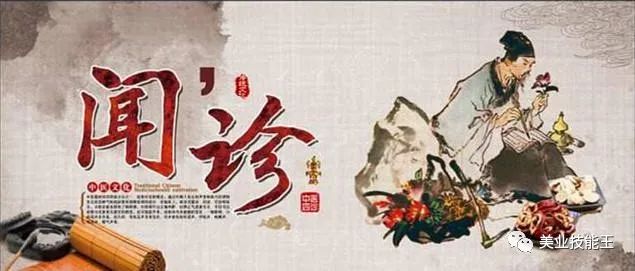In Traditional Chinese Medicine (TCM), the four diagnostic methods of “Observation,” “Listening,” “Inquiry,” and “Palpation” reflect the subtlety of TCM in understanding the internal state from external signs.Listening diagnosis includes hearing sounds and smelling odors. How can one determine a person’s health condition by listening to their voice?By the end of this article, you will understand.
In “Dream of the Red Chamber,” before Lin Daiyu’s death, the description in the book is just a few words: “Baoyu, you are good…” and then she passes away. One can imagine what she wanted to say after that “you are good…” Was it “you are so cruel,” “you are so selfish,” or “you are such a jerk?” Was it said with gritted teeth or in resignation? This all depends on our familiarity with the novel and each person’s mindset, leading to different interpretations. In fact, this phrase carries a strong emotional tone, but Lin Daiyu has been holding back, feeling that as a noble lady, she should not speak too bluntly, yet her feelings must be expressed, hence she says “you are good…”

In TCM, the Five Sounds correspond to the Five Organs. We often say that sound expresses emotion, and emotions arise from the body. A skilled doctor can discern which organ is problematic by listening to a person’s voice.
1. The Liver Sound is “Hu” (呼)
If a person has Liver Qi deficiency, they may shout wildly because “the Liver sound is Hu,” which symbolizes release.
If they are repressed, like being scolded in the office, they cannot shout but can only let out a soft sigh. There are places specifically for venting where people can throw javelins, break things, or curse at others, and during this, they will definitely emit sounds like “Ah” or curse words. These are all forms of self-release.
2. The Heart Sound is “Xiao” (笑)
If a person is always laughing heartily, it indicates a scattered spirit.
3. The Spleen’s Vital Qi is expressed through singing.
Similar to individuals with mental symptoms, we often find that those with such symptoms possess immense strength and skills. No matter how high the wall, they can suddenly climb up and act wildly. Generally, a normal person would need martial arts skills to leap up a wall; otherwise, it is impossible. However, those with mental symptoms can do this because of the internal excess of Yang evil.
4. The Lung Sound is “Ku” (哭)
If a person is always crying or their voice carries a tone of sadness, it indicates Lung issues.
5. The Kidney Sound is “Shen” (呻)
If a person is always groaning, their Kidneys are likely not functioning well.
A good doctor can discern which organ is problematic just by listening to the patient speak, such as whether there is Kidney deficiency or Lung issues. In clinical practice, there are some interesting diagnostic criteria:
For instance, with Lung cough, if a person coughs loudly, it indicates a condition of excess, characterized by a strong and loud cough; if the Lung Qi is particularly deficient, it is called “Sha Qi” (少气), leading to a weak cough that lacks strength, often resulting in a soft, weak sound. Some may think that those who cough loudly are more severely ill, but in fact, the opposite is true; a loud cough indicates that the person still has the energy to cough, while a weak cough is more concerning.
Similarly, for Small Intestine issues, the Small Intestine meridian runs from the cheeks to the nostrils. Therefore, if someone has a very resonant voice with a nasal tone, they likely have Small Intestine problems. Some individuals with rhinitis may speak in a nasal manner, which actually indicates stagnation of Lung Qi.
6. Those with Spleen disease often “Shan Yi” (善噫)
They frequently burp, and the sound is relatively low.
7. Those with Stomach issues yawn continuously.
Yawning is also a sound that indicates Stomach Qi deficiency or coldness, allowing the Stomach to relax.
Kidney cough can be more severe, with blood-streaked saliva resembling asthma, indicating that the Kidneys are not receiving Qi.
8. Gallbladder disease is associated with sighing.
Why do they sigh? Because they cannot express themselves, they constantly wish to do so, hence they sigh or exhale deeply.
What should such individuals do in real life? They can engage in arm exercises to stretch the Gallbladder meridian, and most importantly, they need to adjust their sleep to allow Gallbladder Qi to rise on time.
9. Liver disease manifests as “E Ni” (呃逆)
This is characterized by a feeling of fullness in the chest, resulting in a hiccup-like sound.
All of the above are diagnostic methods through sound. By listening to a person’s voice and the emotions expressed while speaking, one can discern the most prominent organ’s pathological changes. This is a crucial part of TCM’s listening diagnosis.
In the “Biography of Bian Que,” after asking three questions, Bian Que told the Minister that he could cure the illness of Prince Guo. The Minister did not believe him, and Bian Que said that by listening to the Yang, he could deduce the internal condition. As long as he heard the external manifestations, he could understand the internal state and thus cure the Prince’s illness. Therefore, TCM is also very effective in listening diagnosis.
Some people now believe that listening diagnosis is merely about smelling odors; however, smelling is not the main content of listening diagnosis. Yet, some do smell, as previously mentioned with the “Five Odors,” which correspond to the Five Organs and have five distinct smells. For example, a person with Kidney disease may carry a putrid odor, reminiscent of decaying matter. However, this is not a significant aspect of TCM’s listening diagnosis. The most important aspect in TCM listening diagnosis is hearing sounds.
You may also like the following content:
Abdominal Massage Video Explanation
Chest Lymphatic Detox Techniques
Back Massage Techniques Video
Techniques for Treating Humpback
Breast Health Techniques Video
Heart and Lung Care Techniques Video
Back and Waist Moxibustion Techniques Video
Lumbar Manipulation Massage Techniques Video
Abdominal Massage Techniques Video
Ovarian Health Techniques Video
Lumbar Techniques Video Tutorial
Chinese Foot Reflexology Techniques Video
Armpit Lymphatic Detox Techniques Video
Complete Video Tutorial for Hair Washing Techniques
Kidney Health Techniques Video
Abdominal Weight Loss Techniques Video
Leg Massage Techniques Video
Head Scraping Techniques Video
Abdominal Massage Techniques Video
Shoulder Blade Manipulation Techniques Video
Professional Back Explanation Teaching
Don’t be shy; women with strong reproductive functions share these two common traits. If you possess both, congratulations!
The changes in the body between “having sexual activity” and “not having sexual activity” are surprisingly significant!
Reproductive Health: After intimacy, should women urinate or not?
How to maintain health based on different constitutions?
For learning beauty industry sales techniques, follow the public account below:
For learning professional knowledge in the beauty industry, follow the public account below:

